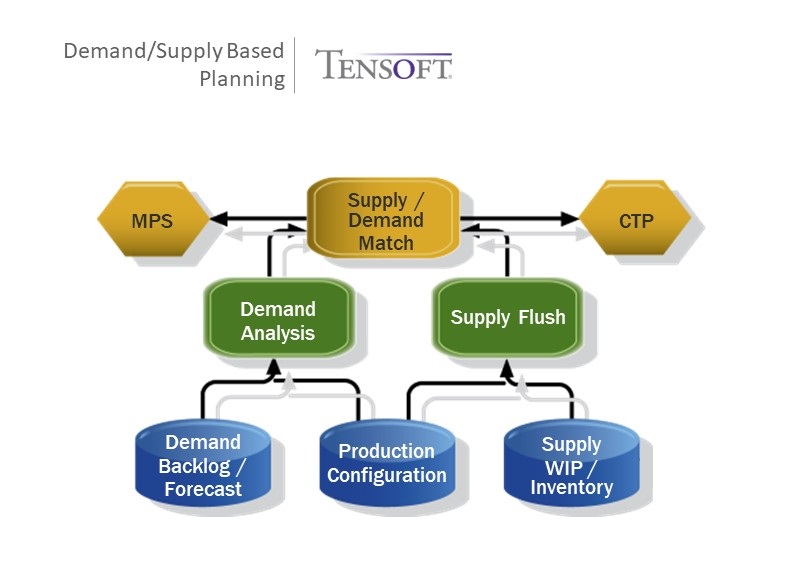Planning is, ideally, about supply and demand. Semiconductor supply is a flush of all inventories and WIP to all possible outcomes – to include multiple end products from a single wafer, to include other variables like binning or programmability, or whatever model you may have for finalizing finished parts. Demand is ideally forecast and actual backlog – with possibly safety stock included. At its core planning takes demand, matches it to the best use of existing supply (WIP or FGI); recommending any additional needed starts when there is not adequate WIP.

Semiconductor manufacturing is all about lots – certainly the production tracking and history is all about lots. It is critically important to track current lots in stages of production, and historic lots that may be inventory or shipped to customers.
When you are planning in spreadsheets, there are many variables where you are trying to do both model the WIP and production and model the supply / demand match. Often the easiest way to do this is to dedicate specific lots to specific demand objectives – pegging the lots to the required demand.
Carrying your lot- based planning forward into a planning system should be done with care. It is often not the best model.
There are reasons people plan by lot – you may have a wafer lot and a specific high priority customer you want to associate it with, or maybe you have a customer that has qualified certain processes and not others and you want to manage that. A lot-based approach doesn’t necessarily meet these objectives. For example, something can happen to a specific lot. It could be delayed due to a production challenge or some transportation challenge or require an engineering review and other lots may pass it in the production process. So, your high priority customer who you are trying to take care of is now not being taken care of and you have to manually remember to adjust your lots, timing, etc. to meet the expectations. So, instead of letting supply flush find the best use in your demand you are manually matching and pegging and adjusting – it requires you to manually track and adjust to every detail and circumstance that happens throughout the process.
Tensoft SemiOps does have formats where you can see a lot-based view of demand – see individual lots and every stage of the production process and every demand they are matched to at the end and that can be done with and without hard pegging. You can peg a lot and have it matched. But it is challenging and should be avoided unless necessary.
There are other options to handle your business requirements. For example, the customer qualification process, where you have 2 different ways to build something, and that customer has qualified one way of doing it. They are a high priority customer, and you want to make sure that they are taken care of and so you are designating a lot as belonging to that customer. We have the ability to have Marketing Parts and Internal Parts. So, you have an external part number that appears the same, but your internal part can designate differences between the different production routes taken. You could have 2 different internal parts that are exactly the same in the end for how you sell them, but one was built in one flow, and the other was built in another flow. This handles the customer qualification requirement instead of managing individual lot by lot production.
The SemiOps planning engine can adjust to changes in supply, production timing, scheduling, yield, or whatever it is on the production side and the demand side in terms of prioritization. By trying to manage by lot you bypass what SemiOps can do for you, and it just requires more effort. So, in general we try to discourage people doing lot-based planning as opposed to letting supply and demand match work for you.
In the diagram above you can see the supply flush, demand analysis and the supply/demand match. If you decide to do lot-based planning, then you basically overwrite what happens in the Supply/Demand Match. SemiOps will match it for you but if you are pegging it, then you need to manually match it and monitor it yourself as opposed to the SemiOps planning engine adjusting for you.
If you would like to get an overview of the Production Planning in Tensoft SemiOps, then read this blog post. To learn more about Tensoft SemiOps, visit our website or contact us today!